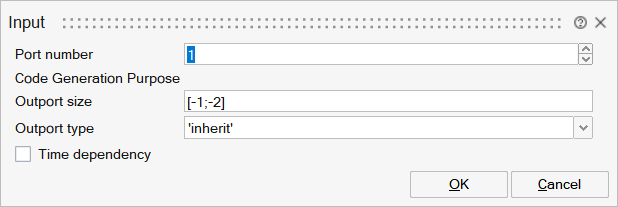Input
This block adds an input port to a super block to connect regular signals outside of the super block to blocks inside of the super block.
![]()
Library
Ports
Description
Placed in the diagram of a super block, the Input block adds an input port to the super block for linking regular signals outside of the super block to blocks inside of the super block. Any link, outside of the super block, that is connected to the input port extends to the corresponding Input block inside of the super block.
The parameter "Port number" determines the relationship between the port block and the port on the super block. By default, the input ports are numbered sequentially from top to bottom.
- When an input port block is added to a diagram, it is assigned with the smallest available "Port number".
- When the "Port number" parameter is changed to an already assigned number, the existing one is renumbered to the smallest available number.
The number of ports on the super block is equal to the largest "Port number".
Parameters

| Name | Label | Description | Data Type | Valid Values |
|---|---|---|---|---|
portNumber | Port number | Number | ||
outsize | Outport size | Vector of size 2 | ||
outtyp | Outport type | String | 'double' | |
dept | Time dependency | Scalar | 0 |
Ports
| Name | Type | Description | IO Type | Number |
|---|---|---|---|---|
Port 1 | explicit | output | 1 |
Advanced Properties
| Name | Value | Description |
|---|---|---|
always active | no | For the simulation, this block is a virtual block. |
direct-feedthrough | no | |
zero-crossing | no | |
mode | no | |
continuous-time state | no | |
discrete-time state | no |